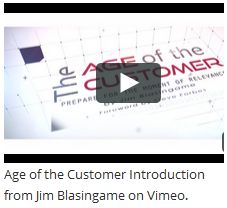As described here previously, control of the three primary elements of the business relationship has shifted as the Age of the Seller is being replaced by the Age of the Customer. The buying decision and access to information about how to make that decision are now controlled by the customer, leaving sellers with control of just the product.
This shift has created many disruptions, especially with entrenched Age of the Seller sales practices, but perhaps none more than business-to-business prospecting. Here are four facets to this prospecting shift:
- The expectation of buyers meeting with vendors as a daily course of business is over.
- After 10,000 years of needing a salesperson to provide information to make a decision, buyers are acquiring much of that information on their own online.
- Prospects are now self-qualifying themselves, and then pre-qualify prospective vendors they choose to meet with, perhaps as few as two, or even just one.
- Prospects are essentially ruling competitors in or out before first contact, often before the business knows the prospect even exists.
Prospects like this new empowerment because it saves time, contributes to their decision-making journey, and reduces contact with uncompetitive and irrelevant vendors. Consequently, getting in front of a prospect for a first meeting, which once was almost automatic, now requires addressing the following new Age of the Customer rules of prospecting.
- Prospects require a higher level of introduction before granting a sales call.
- Prospect research must be conducted.
- Networking – in person and online – is essential.
- Prospect development and nurturing must be practiced with patience and a dialed down sense of urgency.
- With competitiveness now assumed, being relevant is the new differentiator.
- Contribute first, contract second.
- Relevance and values must be demonstrated.
Even the best salesperson, who will still need every classic selling skill to close the sale, is useless if he or she can’t get in front of the prospect before the buying decision has been made.
Companies that expect to meet sales goals now have to put as much, if not more, emphasis and resources on training, equipping, budgeting, measuring, and perhaps even compensating salespeople for the prospecting disciplines of the Age of the Customer.
Which age is your sales organization prospecting in?




